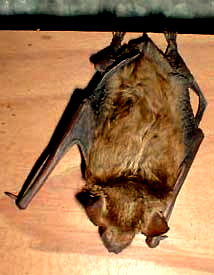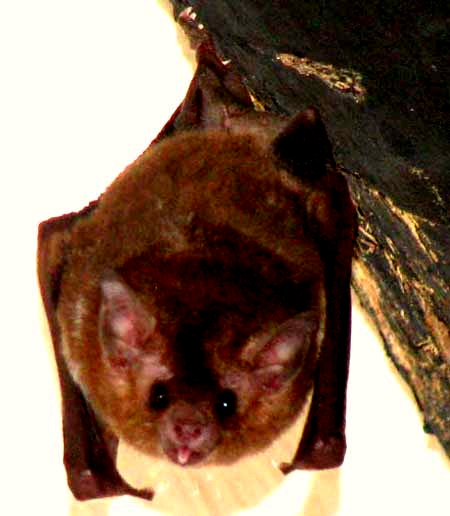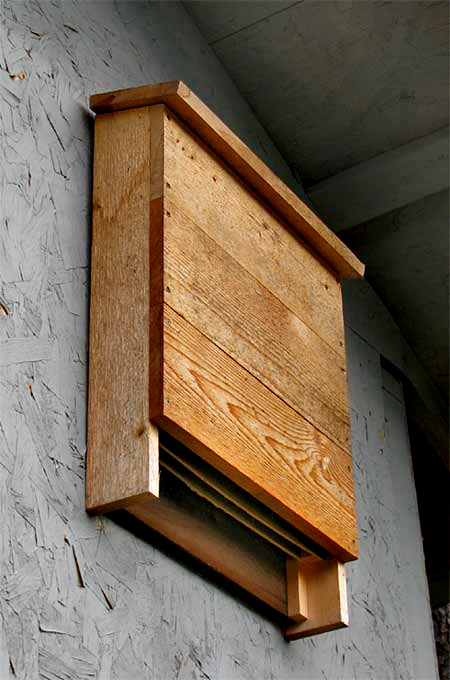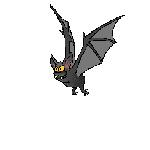 Unless you happen to find a bat in your attic or maybe in a shed or barn, as was the case with the Big Brown Bat, Eptesicus fuscus, at the right, there's not much the backyard naturalist can actually do with bats. Even if you find one, it's best to view it from a distance. If you do find a wounded or trapped one, don't pick it up, for rarely bats can be carriers of the disease rabies.
Unless you happen to find a bat in your attic or maybe in a shed or barn, as was the case with the Big Brown Bat, Eptesicus fuscus, at the right, there's not much the backyard naturalist can actually do with bats. Even if you find one, it's best to view it from a distance. If you do find a wounded or trapped one, don't pick it up, for rarely bats can be carriers of the disease rabies.
With bats, you can take a picture with a telephoto lens, then identify which species you have. As always with the identification process, you're obliged to pay attention to features you may never have heard of. For example, below is the head of one of several leaf-nosed bat species, photographed in Mexico.

The most surprising feature is the flap-like "nose-leaf," thought to play a role in the bat's use of the sound it emits to locate flying insects and to navigate in darkness. A whole family of bats, the Phyllostomidae, bear such nose-leafs, and the famous vampire bats are members of that family. The extra-large ears also help locate things in the dark, by sound.

The bat's process of emitting sound, then judging an object's location by taking into account the time lapsing between the moment the sound was emitted, and the sound's echo bounces back to the bat from something, is called echolocation. Echolocation is a kind of sonar, and it's based on the simple fact that the farther anything is from them when the bats make their sound, the longer it takes for the echo to return. The bat's brain does all this automatically. When you see how fast bats dart about in the air, you'll be amazed at how complex the echolocation-handling part of their brain must be if they can react so quickly to all the echoes coming from all different directions.


One problem in a bat's life is finding a good place to spend the day, which the Big Brown Bats, Eptesicus fuscus, shown above have accomplished, because a kind human put up the bat shelter shown at the right. During days, bats hang upside-down by little hook-like claws on their forearms; the above bats were photographed from below the shelter, looking up into it. Some bat species spend their days alone, maybe hanging among tree leaves or inside hollow tree-trunks or building attics, while others pass the day in large groups, especially in caves and tunnels. Some species make seasonal migrations like birds, while others hibernate when the weather grows cold.

Mother bats produce only a few babies at one time -- one or two in most species. Among animals, having low birthrates is considered to reflect a high degree of social sophistication. In fact, in some bat species the mothers actually carry their young with them as they fly, until the young become large enough to stay at home alone.
You can review some batty books available at Amazon.com by clicking here.